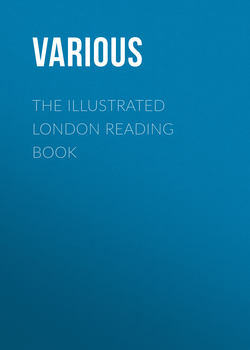Читать книгу The Illustrated London Reading Book - Various - Страница 4
THE GOLIAH ARATOO
ОглавлениеThe splendid family of parrots includes about one hundred and sixty species, and, though peculiar to the warmer regions of the world, they are better known in England than any other foreign bird. From the beauty of their plumage, the great docility of their manners, and the singular faculty they possess of imitating the human voice, they are general favourites, both in the drawingroom of the wealthy and the cottage of humble life.
The various species differ in size, as well as in appearance and colour. Some (as the macaws) are larger than the domestic fowl, and some of the parakeets are not larger than a blackbird or even a sparrow.
The interesting bird of which our Engraving gives a representation was recently brought alive to this country by the captain of a South-seaman (the Alert), who obtained it from a Chinese vessel from the Island of Papua, to whom the captain of the Alert rendered valuable assistance when in a state of distress. In size this bird is one of the largest of the parrot tribe, being superior to the great red Mexican Macaw. The whole plumage is black, glossed with a greenish grey; the head is ornamented with a large crest of long pendulous feathers, which it erects at pleasure, when the bird has a most noble appearance; the orbits of the eyes and cheeks are of a deep rose-colour; the bill is of great size, and will crack the hardest fruit stones; but when the kernel is detached, the bird does not crush and swallow it in large fragments, but scrapes it with the lower mandible to the finest pulp, thus differing from other parrots in the mode of taking food. In the form of its tongue it differs also from other birds of the kind. A French naturalist read a memoir on this organ before the Academy of Sciences at Paris, in which he aptly compared it, in its uses, to the trunk of an elephant. In its manners it is gentle and familiar, and when approached raises a cry which may be compared to a hoarse croaking. In its gait it resembles the rook, and walks much better than most of the climbing family.
From the general conformation of the parrots, as well as the arrangement and strength of their toes, they climb very easily, assisting themselves greatly with their hooked bill, but walk rather awkwardly on the ground, from the shortness and wide separation of their legs. The bill of the parrot is moveable in both mandibles, the upper being joined to the skull by a membrane which acts like a hinge; while in other birds the upper beak forms part of the skull. By this curious contrivance they can open their bills widely, which the hooked form of the beak would not otherwise allow them to do. The structure of the wings varies greatly in the different species: in general they are short, and as their bodies are bulky, they cannot consequently rise to any great height without difficulty; but when once they gain a certain distance they fly easily, and some of them with rapidity. The number of feathers in the tail is always twelve, and these, both in length and form, are very varied in the different species, some being arrow or spear-shaped, others straight and square.
In eating, parrots make great use of the feet, which they employ like hands, holding the food firmly with the claws of one, while they support themselves on the other. From the hooked shape of their bills, they find it more convenient to turn their food in an outward direction, instead of, like monkeys and other animals, turning it towards their mouths.
The whole tribe are fond of water, washing and bathing themselves many times during the day in streams and marshy places; and having shaken the water from their plumage, seem greatly to enjoy spreading their beautiful wings to dry in the sun.
